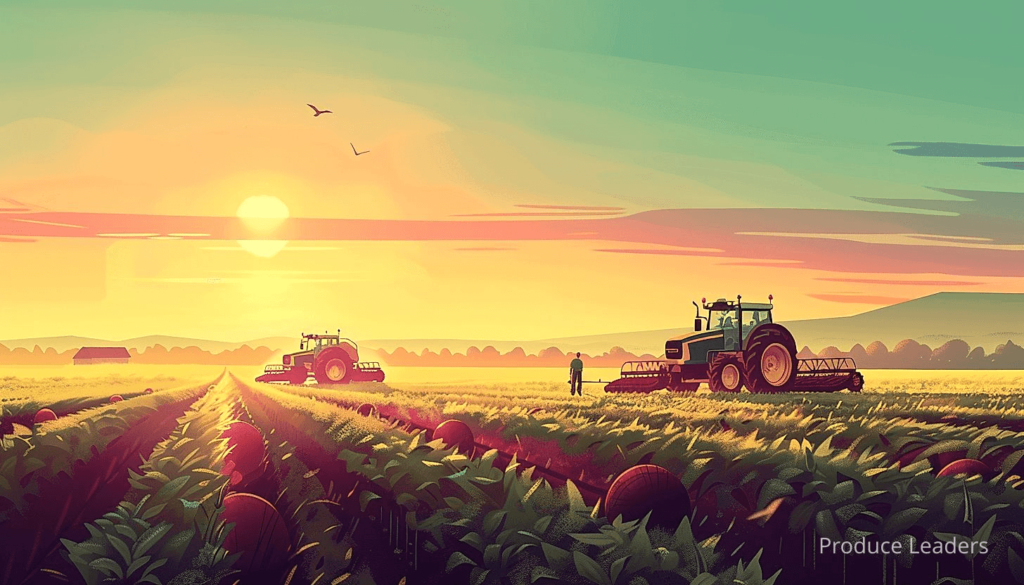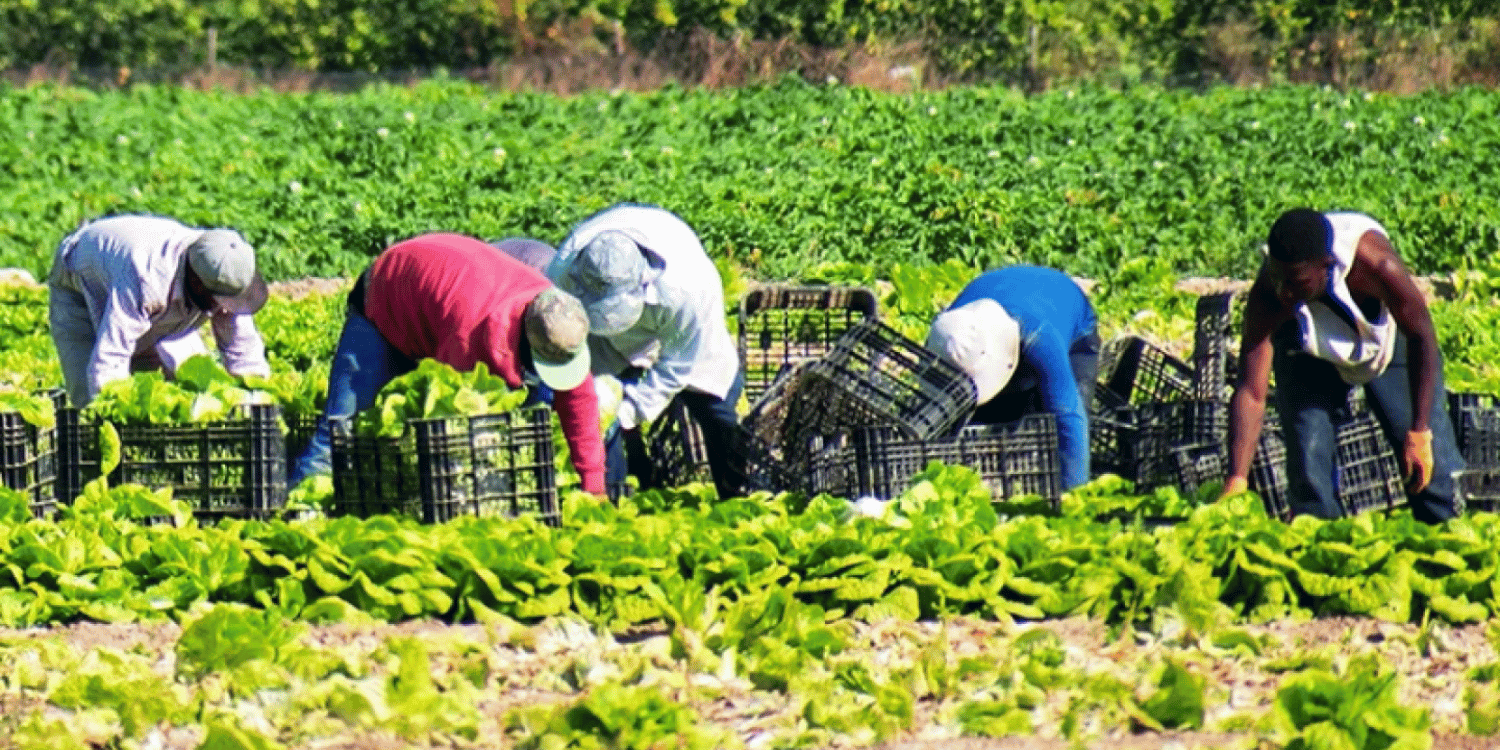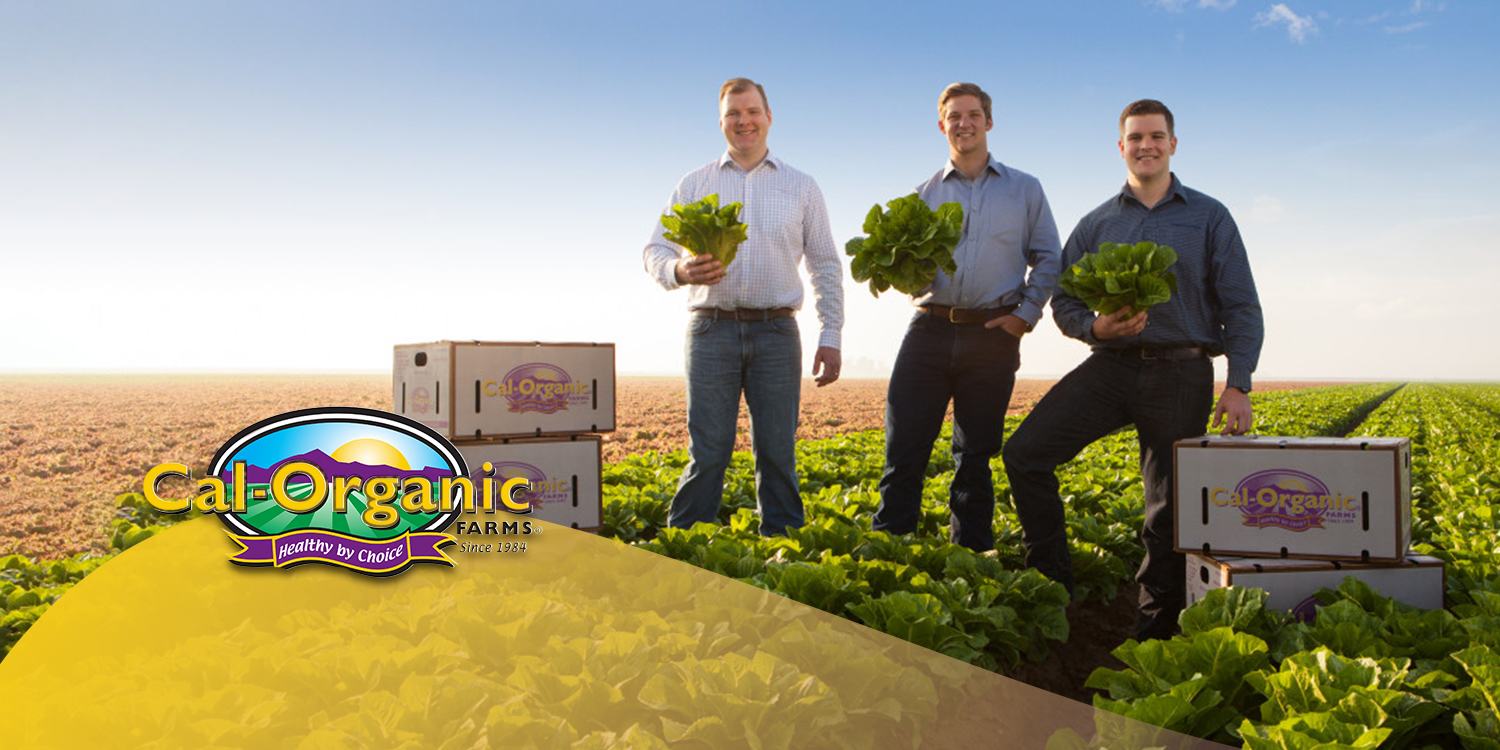Labor shortages in the farming sector are a significant challenge affecting global food supply chains.
This issue is often attributed to several intertwining factors, including an aging farming population, wage disputes, and stringent immigration policies.
The employment gap has a direct adverse impact on production levels, causing price volatile and uneven quality of agricultural goods.
Technological advancements like precision farming and robotics attempt to mitigate the problem; however, they are often out of reach for small-scale farmers due to high costs.
Moreover, the physical and labor-intensive nature of farm work renders it less appealing to the younger generation, intensifying the shortage situation.
Therefore, the situation calls for more sustainable solutions, such as improved labor policies, vocational training in rural areas, and stronger emphasis on the importance of agriculture to the next generation.
- Causes of farming sector labor shortages include immigration policies and aging workforce.
- Disagreements over wages contribute significantly to labor shortages.
- Labor shortages in farming directly impact food production levels.
- While technology could resolve labor shortages, it remains inaccessible for some farmers.
- Improved labor policies and rural vocational training can enhance farming sustainability.
While the impact of labor shortage in farming is significant, its root and consequences run deeper than most appreciate.
In the next sections, we will discuss how these labor shortages can affect both the local and global food supply chain, and dive into a more detailed analysis of the key factors contributing to this issue.
Unveiling these can further our understanding of the escalating challenges faced by the farming sector, and illuminates potential pathways towards sustainable farming solutions.
Stay with us to explore these important topics and broaden your knowledge on the intricate dynamics of labor shortages in farming.
Contents
- What Causes Farming Sector Labor Shortages?
- The Effect of Immigration Policies on Farming
- How Does an Ageing Farming Population Impact Labor?
- How do Wage Disputes Contribute to Shortages?
- Impact of Labor Shortages on Food Production
- Role of Technology in Addressing Labor Shortages
- Why is Tech Out of Reach for Some Farmers?
- Importance of Agriculture for the Next Generation
- Improving Labor Policies for Farming Sustainability?
- Vocational Training in Rural Areas: A Solution?
- The Bottom Line
What Causes Farming Sector Labor Shortages?
In Short: Labor shortages in the farming sector are caused by physically demanding work, seasonal and unstable employment, advancement in mechanization, uncompetitive wages, and strict immigration policies. Additionally, the requirement for specific skills in agricultural tasks, often involving significant training or experience, deters potential workers.
Many factors contribute to the serious labor shortages plaguing the farming sector. Let’s dig in into these causes and expound on them further.
First and foremost, agriculture is hard work. Do these farms offer an appealing work environment?
It is undeniable that the daily tasks that come with farming activities can become rigorous and physically demanding. This factor, in itself, can often deter potential workers.
Unattractive working conditions in the sector can be a significant cause of labor shortages. However, it is also important to consider the roles that seasonal needs and employment instability play.
Have we thought about farming’s seasonal character and its impact on labor consistency?
The seasonal nature of farming work leads to inconsistent employment opportunities. For workers who are seeking stability, this nature of work is less than desirable.
Market fluctuations and the acceleration of mechanization in farming activities have, no doubt, left their mark. Has technology become a competitor to human labor?
Increasing mechanization in agriculture is reducing the number of human laborers required in the field. It is tempting for farmers to invest in machinery that, in the long term, could be less expensive than maintaining a large workforce.
Another major cause is less competitive wages compared to the other industries. Simply put, can farming compete on earnings?
Most farm labor jobs fail to offer competitive wages when compared with other sectors. This reality inevitably turns potential workers to other industries.
Let’s now take a closer look at some of the primary causes in a more organized manner:
- Physically demanding work
- Seasonal and unstable employment
- Accelerating mechanization
- Uncompetitive wages
Apart from these, it’s crucial to consider that farming work often calls for skills that may frighten away potential laborers. Is there a skill set requirement beneficiaries are not willing to acquire?
Many farm tasks call for specific skills that might require years of experience or training. Acquiring these skills takes patience, dedication and, in some situations, financial means.
Having touched on these causes, it’s important to consider the structural issues impacting labor availability as well. Are immigration policies playing a role?
Many countries rely on migrant labor to fill their agricultural labor needs, and stricter immigration policies can drastically reduce this labor source. This curb in migrant workers can contribute significantly to labor shortages.
Pro Tip: To address labor shortages in the farming sector, it’s important to tackle issues like physically demanding work, seasonal and unstable employment, accelerating mechanization, uncompetitive wages, skill set requirements, and immigration policies.
We have dipped our toes into some fundamental causes of labor shortages in the farming sector, this comprehension can guide us towards rectifying these issues.
The agricultural sector is a important pillar of our economies; hence it is imperative to address these labor shortages head-on. Knowledge of these causes is the first step on this journey.
The Effect of Immigration Policies on Farming
In Short: Agriculture heavily depends on immigrant labor, and stricter immigration policies often result in labor shortages and increased operational costs for farms. While mechanization offers some help, it cannot fully replace human talent and labor, complicating the debate around immigration policies in farming.
Let’s dig in into the topic by examining the core of the problem. Have you ever wondered about the impact of immigration laws on farming?
It might surprise you to know that agriculture depends heavily on immigrant labor. With less stringent immigration policies, farms can recruit more workers.
What happens when these policies get tightened? We see a significant decrease in the number of migrant workers.
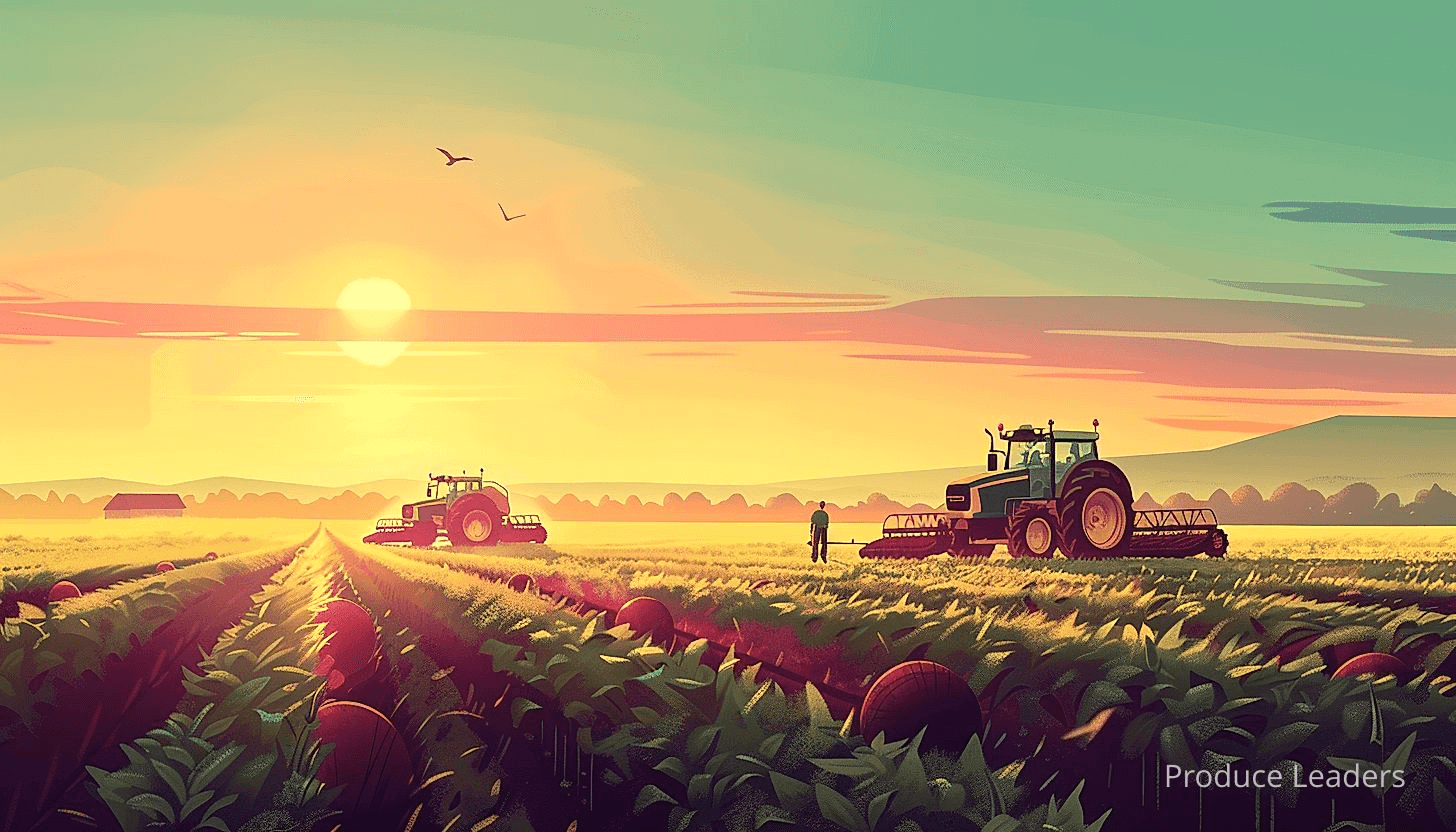
The ripple effect of this is a shortage of workers. The farming sector often suffers from labor insufficiencies as a direct result of stricter immigration policies.
Why are these workers so crucial? They perform essential tasks such as planting, cultivation, and harvesting. Without them, the farming industry struggles.
To put it into context, here are some of the challenges that can arise:
Thus, we can see that the agriculture sector is intrinsically tied to immigration policies.
But what about mechanization as a solution? Is it plausible?
It’s important to note that while mechanization may help to a degree, it cannot fully replace human labor. Machines can’t discern between ripe and unripe fruits like humans can.
Furthermore, the cost of mechanization can be prohibitive for smaller farms.
These realities place farmers in a difficult position. Without enough workers, they struggle to sustain their operations.
Thus, the link between farming and immigration is undeniable. With restrictive immigration policies, the farming sector has to face difficult challenges.
On the flip side, more lenient policies could alleviate some of these issues. But would that come with its own set of problems?
While the impact is undoubtedly significant, the solution isn’t as straightforward. The farming industry remains a key player in this complex debate about immigration policies.
How Does an Ageing Farming Population Impact Labor?
In Short: An ageing farming population faces increased physical challenges and potential risks of lower productivity and slower adoption of new techniques, sparking concerns about the sustainability of the sector. Addressing this issue requires a multifaceted approach including educational programs, government funding, and technology to stimulate interest among younger generations and mitigate labor shortages.
When we think about farming, we often visualize labor-intensive work, right? With a rapidly ageing farming population, questions arise regarding the sustainability of this sector.
As older farmers continue to manage and operate their farms, we see an increased need for physical assistance. Older farmers may struggle with tasks that require heavy lifting, bending, or long periods of standing.
Do we realize the risks at hand? The likelihood of accidents and injuries is significantly higher for older than for younger farmers.
Productivity levels are another consideration. How efficient can an older individual be compared to a younger counterpart in a physically laborious profession?
Furthermore, the innovation and adoption of new farming techniques might lag. Is an older farming population as receptive to technological advances as a younger one?
One must also consider the transfer of the farming business. Are younger generations interested in taking up farming? Unfortunately, we often observe a negative trend.
Let’s dig in into some of the key reasons why young adults are reluctant to enter the farming sector.
- The nature of farming doesn’t appeal to most; it’s a physically taxing and time-consuming profession.
- Moreover, the financial uncertainty attached to farming can prove to be a deterrent.
- Lastly, for others it’s a question of lack of knowledge and inexperience in the industry.
These factors raise concerns about the future of farming as a viable profession. We have to ask ourselves, how will an ageing farming population impact the labor supply in agriculture?
The loss of important knowledge and expertise is also a potential risk. When the older generation steps back, does the invaluable experience and wisdom they hold get lost too?
The solution is by no means an easy one. A multifaceted approach involving educational programs, government funding, and community-level efforts might be needed to prevent labor shortages.
Training programs can stimulate interest in farming among younger generations. Meanwhile, technology could provide solutions to some of the physical challenges associated with farming.
The prospect of an ageing farming population does present challenges. But, can this also be an opportunity to reimagine and reshape the future of farming?
How do Wage Disputes Contribute to Shortages?
In Short: Wage disputes in the farming sector, largely due to unfairly low wages and lack of worker rights, contribute significantly to labor shortages. Without proper wage structures and increased transparency, these disputes can lead to decreased productivity and subsequent shortages in the sector.
Ever wondered why there’s such a constant buzz about wage disputes in the farming sector? It’s because this issue is an undeniable factor leading to labor shortages.
The debate over wages is as old as employment itself, and it’s having a profound impact, isn’t it? But how does this dialogue directly result in a scarcity of workers, you might ask?
First off, low wages are a primary concern. Falling prey to the ruthless competition in the global market, farmers often pay wages that many consider unfairly low.
Couple that with the grueling demands of the work and you’ve a recipe for dissatisfaction. You’d be hard pressed to shoulder such physical burdens for nominal pay, wouldn’t you?
Moreover, it’s pertinent to point out that farming jobs are seasonal in nature. This means that workers are not assured of a stable income year-round. Instead, they have to juggle multiple low-paying jobs to make ends meet.
Imagine that. Wrestling with uncertainty, just to ensure there’s food on the table. Who wouldn’t consider leaving such a sector?
Let’s dive a bit deeper here and explore more key reasons why wage disputes result in labor shortages:
- Poor negotiation power: Workers in the farming sector often lack the ability to negotiate for better wages. Such a lack of bargaining power results in acceptance of unfairly low wages.
- Lack of worker rights: In many regions, farm workers do not have access to basic rights, including minimum wage or overtime pay. This heightens the feeling of being exploited, doesn’t it?
- Insufficient government intervention: There’s often minimal government interference in wage setting in the farming sector. With no protective measures, is it surprising that the workforce is dwindling?
Quite a grim outlook, don’t you think? Each of these factors, in turn, dissuades potential workers from joining the sector, thereby contributing to labor shortages.
Wage disputes, thus, aren’t just disagreements on pay- they’re deterrents that hold potential workers back.
Who would willingly enter a sector where the wage doesn’t correspond with the intense manual labor involved?
Further, the protests and strikes resulting from such disputes also reduce productivity. It’s quite easy to see how this could contribute to shortages, right?
Perhaps, then, it is time for stakeholders in the farming sector to streamline wage structures, improve worker rights, and introduce greater transparency in earnings.
Important: Wage disputes in the farming sector, compounded by low wages, poor negotiation power, a lack of worker rights, and insufficient government intervention, are a significant factor contributing to labor shortages.
Only then can we hope for a resolution to these wage disputes and, consequently, an end to labor shortages. Does that make sense to you?
After all, if we don’t deal with wage disputes, we may find our plates lacking the fruits of farm labor.
Impact of Labor Shortages on Food Production
In Short: Labor shortages in the farming sector considerably affect global food production, leading to delayed farming schedules, reduced productivity, and increased food prices. These shortages, if not addressed, could also impact the diversity and quality of food, rural economies, and the overall sustainability of farming practices.
Labors shortages in the farming sector have implications that extend far beyond the farm. They’re a significant hurdle that profoundly affects food production globally.
When there is an inadequate supply of workers, agricultural operations can not run smoothly. Farms require labor-intensive tasks, and a lack of workers leads to severe ramifications.
Farm labor shortages inevitably delay planting and harvesting schedules. Does this impact crop productivity? Yes, it does. The range of risks from immature crops to crops left on the vines could lead to decreased farm outputs.
With dropping productivity, the available food supply for consumption and export decreases. As a result, food security not only at home but also in countries that rely on our exports is at risk.
Can you imagine what this means for local and global markets? Early indications show an increasing trend. Food prices globally are on the rise as lower supplies meet unabated demand.
Here are a few primary effects that labor shortages in the agricultural sector have:
- Delayed plantings and longer harvest periods
- Increased susceptibility to damage by pests, diseases, and weather
- Lower farm productivity and decreased agricultural exports
- Rising food prices domestically and globally due to lower supplies
Not only prices, but the quality and diversity of food could also suffer. Say goodbye to a variety of fresh fruits and vegetables in your local grocery stores. Labor shortages could mean a more limited selection of fresh produce, affecting demand and consumer preferences.
As farms struggle to make do with fewer hands, they may strive to find ways to cut costs and streamline operations. This might lead to increased mechanization and fewer job opportunities in the future.
How does this affect rural economies that rely heavily on agriculture for employment? With the reduction of opportunities, unemployment rates might rise. This creates a detrimental loop of workforce reduction and less productive farms.
Labor shortages can also influence farms’ business decisions like opting for less labor-intensive crops. This not only affects the supply of certain produce but impacts the broader agricultural landscape.
This shortage doesn’t look like it’s going away soon, does it? The world will need to find substantial and sustainable solutions to address these pressing labor shortage issues. The scope of the challenges we face in ensuring food security looks daunting.
But then again, this is only one side of the coin. What about the impact on farmers’ mental health, the quality of farm jobs, and the long-term sustainability of farming practices? There’s a bigger, long-term picture we must consider.
In the end, labor shortages in the farming sector translate to issues in global food production. The hard truth is, it impacts everyone -from the individual farmer to the global consumer.
Role of Technology in Addressing Labor Shortages
In Short: Technological advancements such as automation, precision agriculture, and artificial intelligence can address labor shortages in the farming industry by improving efficiency and productivity. However, the adoption of these technologies requires investment in terms of money, time, and training.
It’s no secret that labor shortages have been a significant issue in the farming sector. Many factors contribute to this problem, ranging from aging farmer populations to younger generations moving to more urban areas for work.
However, have you ever stopped to wonder how technology could solve this issue? Technological advances have drastically changed the agriculture industry over the years.
Before we dive deeper into how technology can help alleviate labor shortages, let’s list out some significant ways in which it contributes:
- Automation: Huge strides have been made in farm automation technologies.
- Precision agriculture: This is all about enhancing productivity while saving time and resources.
- Artificial Intelligence: AI helps predict patterns and trends more efficiently.
Automation can effectively ease labor shortages on farms. With technologies like autonomous tractors, farmers can cover more ground faster and more efficiently than ever before.
Can you imagine the potential for productivity? Machinery no longer needs continuous human monitoring. These advancements allow farmers to focus on other critical aspects of their operations.
Next comes precision agriculture. Can you guess what it entails? It is about making farming more precise and controlled to increase efficiency and productivity.
It includes technologies like GPS-guided equipment and satellite imagery. This doesn’t just save time and power, but also significantly reduces the need for labor.
Artificial Intelligence in farming is also gaining momentum. Remember when we talked about predicting patterns? AI assists in analyzing patterns and trends to optimize farming practices.
This could include anything from crop planning to monitoring weather conditions. Just think about it. How much time and effort could be saved with these predictions?
The combination of automation, precision agriculture, and AI could redefine the future of farming. This adoption of technology is not just about filling labor gaps. It’s also about enhancing efficiency and productivity.
It’s worth noting that the integration of this advanced technology requires an investment. Not just in terms of money, but also time and training. But could it be a small price to pay to solve a significant problem?
Technology has already begun reshaping the farming industry. It’s just a matter of how quickly the pace of adoption will take place, isn’t it?
The understanding and adoption of these technologies could transform the farming sector. They can help bridge the labor gap plaguing this sector. A question remaining is, are we ready to embrace the evolution of farming?
In all, technology certainly presents promising solutions to labor shortages in farming. Reimagining how we do agriculture can pave the way for a more labor-efficient, productive, and sustainable future. Indeed, technology may not be the only solution, but it certainly seems to be an integral part of the solution, doesn’t it?
Why is Tech Out of Reach for Some Farmers?
In Short: High initial costs and the technical knowledge required prevent many farmers from adopting advanced farming technologies. Factors like unreliable internet in rural areas, resistance to change and low awareness further contribute to this lack of technology adoption in the farming sector.
There are numerous reasons why incorporating technology in the farming sector becomes a challenge. Let’s dig in into the primary concerns that may keep farmers from accessing or applying advanced technologies.
High initial costs are one predominant barrier to technology adoption. Setting up advanced farming technology systems isn’t cheap, is it?
The cost of purchasing, installing, and followingly maintaining high-tech farming equipment can stretch far beyond the budget of many small or medium-sized farms. These farmers may find the expenditure unjustifiable, especially given the uncertain returns or lack of immediate payoff.
Technology requires expertise to operate. Farmers, especially older ones, might lack the technical expertise needed to effectively use these technologies.
Is it feasible to expect all farmers to learn complex technological skills? Even though some farmers may manage to grasp a smattering of technical knowledge, they often lack the deeper understanding needed to derive maximum benefit from their investments in technology.
Here’s a few of the high-tech farming technologies that require significant technical expertise:
- Precision farming technology
- Hydroponic systems
- Automated machinery
- Drone technology
Another factor that cannot be understated is the lack of reliable and affordable internet connectivity in rural areas. For many technologically advanced tools to function optimally, a strong internet connection is necessary.
Without reliable internet, is it realistic to expect rural farmers to be able to take advantage of technology fully? This leads some farmers to avoid adopting technology at all, rather than facing incomplete benefits due to interrupted online services.
Farmers sometimes do not see the need for change, especially if their current practices are bearing reasonable fruits. Why should they make the colossal time and financial investment if they perceive things are working well enough without it?
Resistance to change and lack of awareness can play a significant role in the limited adoption of technology. It’s an age-old adage, “If it ain’t broke, don’t fix it”. Why should farming be any different?
Understanding and addressing these challenges is crucial to ensure technology becomes a mainstay in the farming sector. It’s about helping farmers, isn’t it?
By investing in farmers’ education about the benefits and application of technology, reducing the cost of cutting-edge farming tools, and improving internet connectivity in rural locales, we can help bring technology within their reach.
Importance of Agriculture for the Next Generation
In Short: The future of global food security is dependent on the next generation of farmers who will need to address major challenges such as climate change and a growing population. Embracing sustainable practices, advanced technologies, and advocacy in the agriculture sector, is crucial to meet the expected 70% increase in food demand by 2050, ensuring a prosperous future on our planet.
The future of global food security hinges on the farming industry. The next generation plays a crucial role in this scenario.
We are already witnessing a growing population. Consuming food locally and reducing the carbon footprints are the need of the hour, aren’t they?
Modern agriculture is not just about producing food. It is about creating a sustainable future.
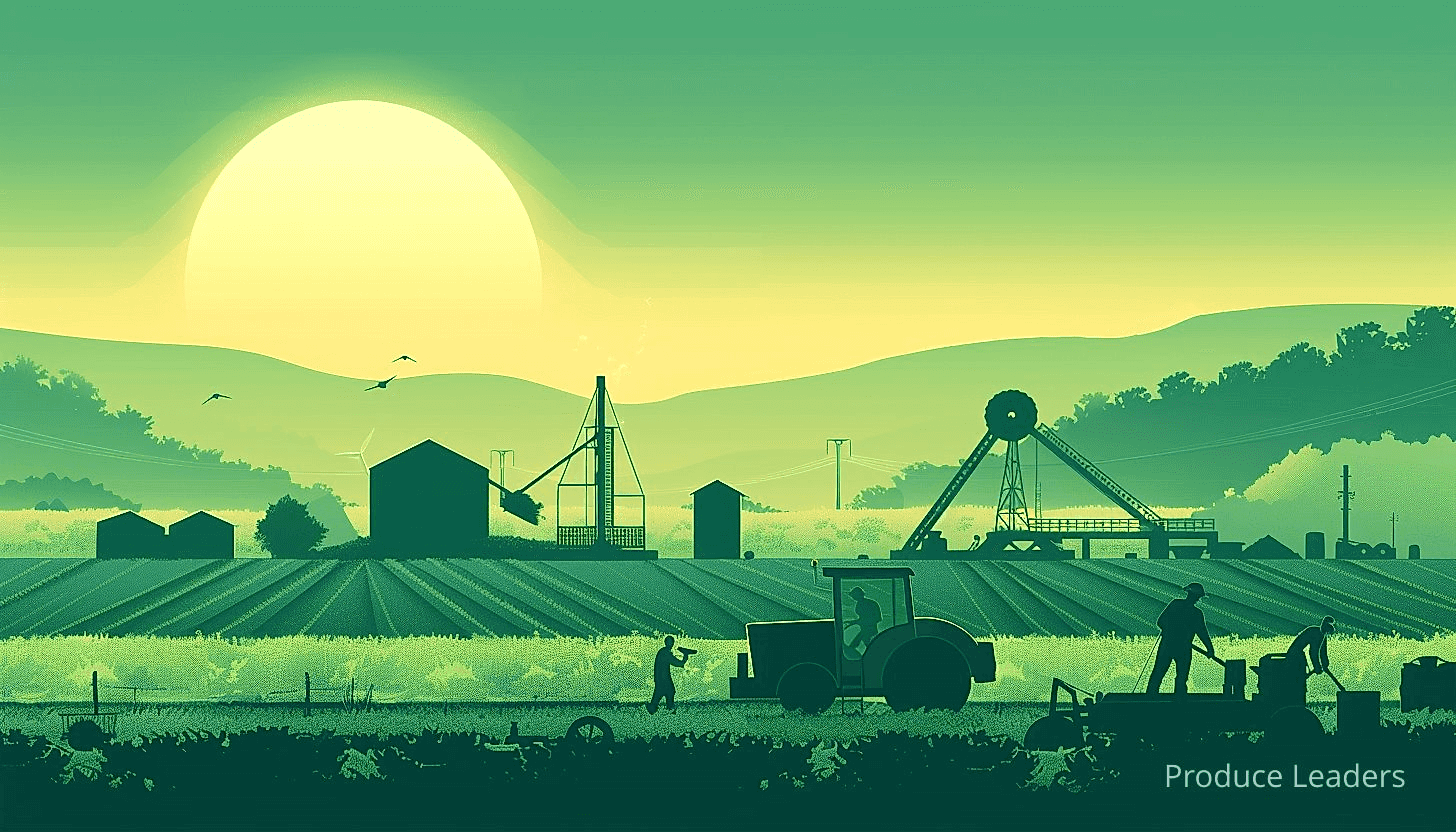
Let me tell you, what does the future of agriculture look like for the next generation? We are here to explore that.
The next generation of farmers will inherit a world vastly different from what we are used to now. They will face new challenges and opportunities.
Climate change is not a distant future. The stakes have never been higher. Addressing this crisis is not optional.
The next generation farmers need to be adept at managing these changes. This responsibility rests largely on their shoulders, isn’t it?
But how can they prepare for these challenges? We must equip them with modern farming techniques.
This includes learning about innovative technologies, such as artificial intelligence and robotics. These skills are pivotal.
Here are few areas where the younger generation can amplify their efforts:
- Implementing sustainable practices: The next generation must prioritize sustainable agriculture. It is about conserving water, soil, and other resources.
- Embracing technology: Farmers must be open to adopting advanced farming technologies. This also means, getting comfortable with data analytics, automation and biotechnology.
- Advocacy: They must speak up for their concerns and rights. The farming sector needs active participation.
The FAO predicts by 2050, the demand for food will increase by 70%. This makes farming even more significant.
Farming is not just an occupation, but a life’s calling. You would agree, wouldn’t you? It caters to one of the basic human needs – food.
The bet is high, and the reward even higher. The prosperity of the farming sector is synonymous with a thriving future. The safety and prosperity of our planet lies in the hands of the next generation of farmers.
We can’t underestimate the role of agriculture in shaping our future. The farming sector is much more than hindsight.
Are we ready to pass on the baton to the next generation? After all, it’s not just farming. It is about securing a sustainable future for humanity.
Improving Labor Policies for Farming Sustainability?
In Short: The article highlights the urgent need to address labor shortages in the agriculture sector by reshaping labor policies to ensure sustainable farming. Key proposed improvements include fair wages, better worker protection and benefits, continuous skill training, and creating agricultural labor union; all aimed at attracting more laborers, enhancing their skills, and ultimately improving the socio-economic condition of the laborers and the long-term sustainability of agriculture.
Given the importance of agriculture in our economy, how can we neglect the visible labor shortages in this sector? Many are the factors causing this shortage, and it becomes an urgent need for sustainable farming.
The current labor policies are inadequate and need to be addressed. The pressing question here is, how can labor policies be reshaped for a more sustainable farming industry?
One proposal calls for a fair wage policy in the farming industry. Fair wages can attract more labor to this industry, easing the current shortage.
We need to talk about benefits and protection too. Many workers evade agriculture due to the lack of benefits and job security that other industries offer.
One first step might delivering farming laborers more adequate protection and benefits. But then, isn’t is worth wondering, what if that’s all it took to ensure farming sustainability?
Farmers need to invest in continuous skill training for their workers. Workers with up-to-date knowledge and skills are not only more efficient but also contribute positively to the overall sustainability of farming.
Considering the effective suggestions to improve labor policy, let’s look at a concise list:
- Ensure fair wages to attract and retain laborers in the farming industry.
- Provide adequate protection and benefits to make the farming industry competitive.
- Invest in continuous skill training to keep the workforce competently synced with advancements.
Are these proposals foolproof solutions? Well, implementing these changes might not address all issues, but they can significantly improve conditions.
We can agree that adequate representation for laborers is important. Collective bargaining yields better results than individual negotiations. Wouldn’t that help workers voice their concerns and fight for their rights?
Being more specific, the creation of bodies like “Agriculture Laborers Union” can provide the necessary platform. It’s definitely a proposal worth considering, isn’t it?
While technological adaptations like machinery can supplement the labor force, it cannot entirely replace human touch in farming. Hence, improvement in labor policies remains to be a crucial step towards sustainable agriculture. The onus is on us to facilitate a balanced co-existence of labor and technology.
Labor policies should also motivate the younger generation to perceive farming as a viable career path. After all, isn’t this about the future of our society and isn’t it also about food security?
With everything said, addressing labor shortages in farming represents an intriguing opportunity. It showcases how we can improve the socio-economic situation of laborers and ensure long-term agricultural sustainability. Pretty remarkable, isn’t it?
Pro Tip: To improve labor policies for sustainable agriculture, ensure fair wages, provide adequate protection and benefits, invest in continuous skill training for the workforce, encourage adequate representation for laborers, and promote farming as a viable career path for the younger generation.
It’s important to remember, these proposed changes should address both the short-term hurdles and long-term sustainability. After all, aren’t we striving for a responsive, resilient, and sustainable farming industry?
At the end of the day, any proposed labor policy changes should be transparent, effective and sustainable. Making it happen is altogether a different challenge, but haven’t we always been up for it?
Vocational Training in Rural Areas: A Solution?
In Short: While vocational training can potentially address labor shortages in rural farming, it alone isn’t a comprehensive solution. A multi-faceted approach incorporating improvements in pay, work conditions, and technology is crucial to bolster the attractiveness of the agricultural sector.
In recent years, rural areas have been plagued by labor shortages in the farming sector. Despite the critical role agriculture plays in maintaining our society, it’s been facing numerous challenges in recruiting and retaining the workforce.
The reasons behind this labor shortage are multifold. Can these issues be fully addressed through vocational training in rural areas?
Let’s first consider the core problems rural farms often face. Some argue that the lack of suitable prospects stems from the low attractiveness and perceived difficulties associated with farming jobs.
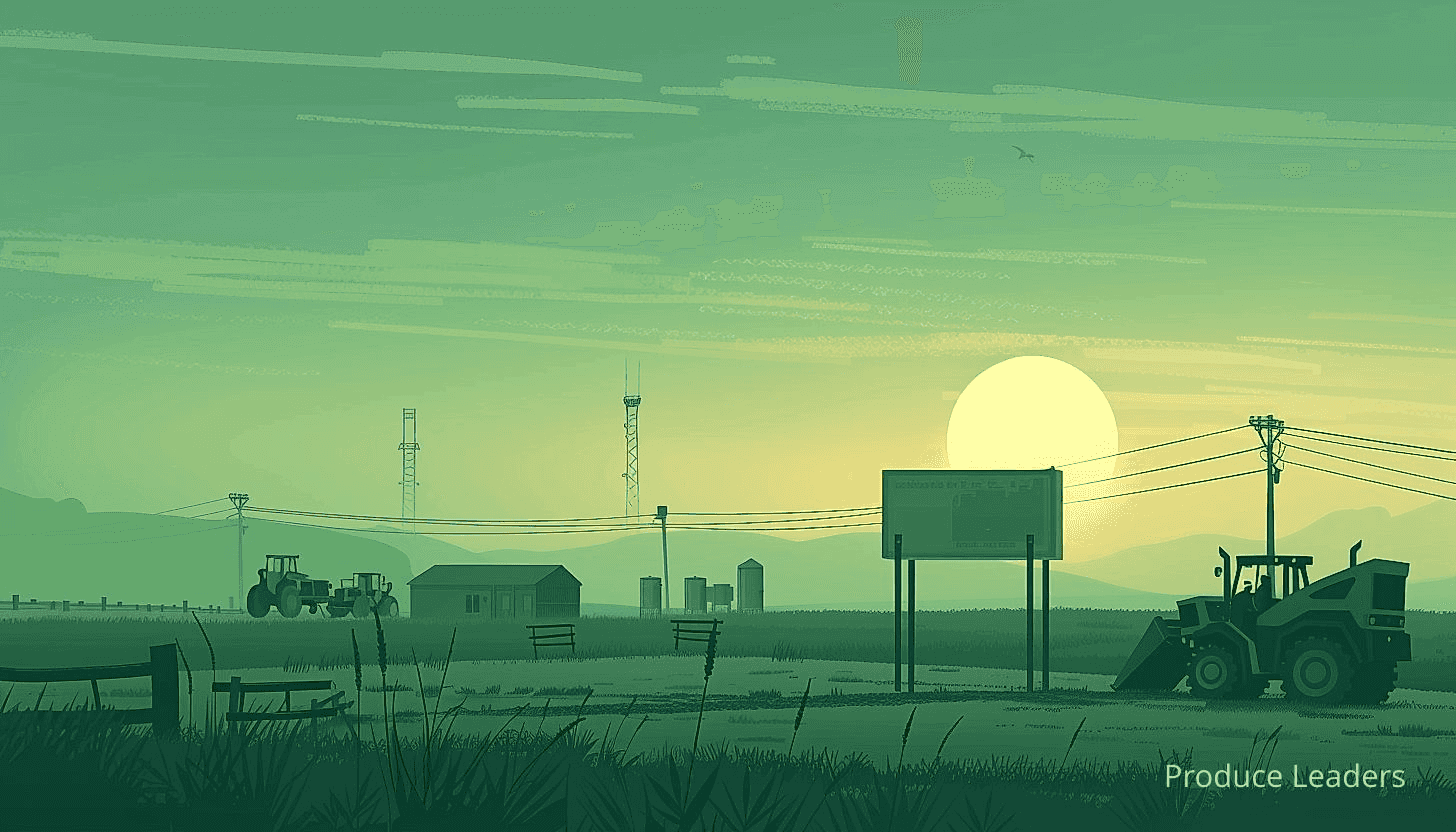
Could we perhaps change this negative perception and encourage more individuals to consider farming as a career choice?
If so, vocational training programs in rural areas can be one effective solution, right? But that’s easier said than done.
Implementing vocational training involves a number of factors. We need to consider if these programs are easily accessible to potential learners, are they applicable in meeting their needs, and do they offer any job placement assistance upon completion of the program.
These factors will significantly contribute to the success and effectiveness of vocational training in curbing the labor shortage.
Let’s take a look at some of the specific areas where vocational training can possible make a difference:
- Provide career guidance with focus on agriculture sector
- Offer practical skills training to increase operational efficiency
- Include entrepreneurial education to encourage self-employment
Vocational training can possibly reshape the future of farming in rural communities. However, it’s worth asking, will all these efforts be enough?
Even with vocational training, farming is still considered barely profitable and challenging. What about making agriculture more financially attractive?
Raising the perceived value and remunerative potential of farming jobs might be the real key to resolving labor shortages. This could also dramatically increase enrollment in vocational training programs.
Moreover, we should not forget other viable strategies to maintain a healthy labor force in the farming sector, such as improving working conditions, offering benefits and incentives, or implementing technology to enhance productivity.
Given all these considerations, vocational training in rural areas can be a part of the solution, but it’s certainly not a panacea.
It’s a complex issue, isn’t it? Nonetheless, if implemented correctly and complemented by other measures, vocational training could have significant positive impacts on rural farming communities.
The Bottom Line
Farming sector labor shortages are largely driven by immigration policies, an ageing farming population, and wage disputes.
Changes in immigration policy have significantly affected labor availability in the farming sector, often resulting in a workforce reduction.
The impact of an ageing farming population is two-fold; in the short term, it reduces the workforce, but in the long term, it poses the risk of losing valuable skills and wisdom.
Wage disputes, usually between farmers and laborers, also contribute to labor shortages, as they can deter individuals from considering agricultural work.
Furthermore, inadequate labor force in farming could lead to reduced food production, potentially threatening food security.
Technology could play a significant role in mitigating labor shortages, using automated machines to increase efficiency and reduce the need for manual labor.
However, the high costs and required technical knowledge make technology an unattainable solution for some farmers.
It is crucial for the younger generation to recognize the importance of agriculture, not only for food production but also for its role in the economy and environment.
Improved labor policies could contribute to farming sustainability by offering incentives to attract and retain a skilled workforce in agriculture.
Finally, investment in vocational training in rural areas could be a significant solution, offering local communities the opportunity to acquire essential farming skills and knowledge.

